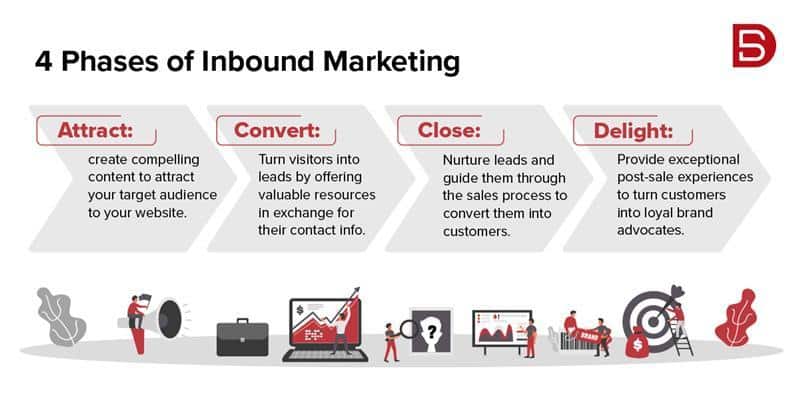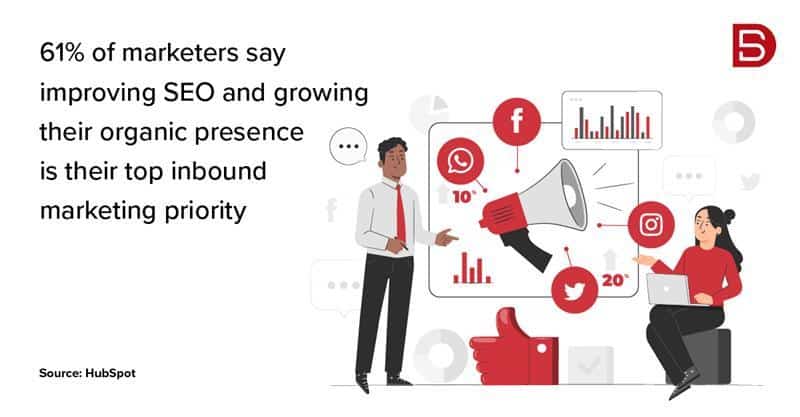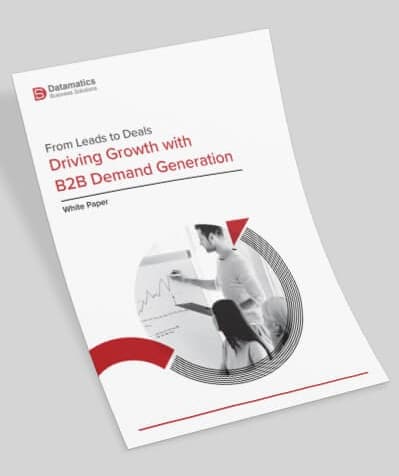Over the years, the concept of inbound marketing has rapidly gained momentum. If your knowledge of marketing is solely based on the outbound model, inbound strategies may sound alien. However, almost a decade from its prominence, many businesses have used inbound to achieve excellent results and growth.
While traditional outbound marketing strategies certainly have their role in boosting brand visibility, they fall short when it comes to addressing the preferences of today’s sophisticated consumers. With the advent of the internet and abundant information at their fingertips, people have become proactive researchers. When they need a product or service, they turn to search engines, social media, and online reviews to gather information, read reviews, and compare options before deciding.
This is where inbound marketing shines. Instead of pushing messages onto consumers, it focuses on pulling them in by offering valuable content that caters to their needs and interests. Inbound marketing respects the consumer’s desire for informed decision-making by providing solutions, insights, and useful information. Let’s explore how it can drive meaningful interactions and high-quality leads.
 Select an element to maximize. Press ESC to cancel.
Select an element to maximize. Press ESC to cancel.What is Inbound Marketing?
Inbound marketing is a marketing strategy that focuses on providing customers with valuable experiences. Instead of bombarding people with ads and messages they might not want, it’s about creating helpful content that people want to see. This can include blog posts, videos, or guides about topics your potential customers care about.
The idea is that when someone searches for a topic related to your business, they find your content and think, “Hey, these guys know what they’re talking about!” This builds trust and makes them more likely to stick around and learn more.
But it doesn’t stop there. Inbound marketing is also about giving something valuable to your visitors, like a free eBook or a webinar, in exchange for their contact information. This way, you can keep in touch and provide them with more helpful stuff.
And as people get to know you through your content and emails, they might want to do business with you. So, it’s not just about getting new customers but also keeping them happy after the sale.
Inbound Marketing vs. Outbound Marketing
Outbound marketing is a traditional type of marketing in which you broadcast your message to the masses and hope it resonates with your target audience. It can include email lists, pop-up or display ads, billboards, or cold calling, to name a few.
But consumers are increasingly looking for ways to block out these unsolicited messages with services like spam filtering, ad-blocking, and caller ID.
Back in 2005, the concept of inbound marketing came into play as a solution to the decreasing impact of outbound strategies. It’s all about grasping the buyer’s journey and crafting content that fits each stage, aiming to transform visitors into loyal customers and enthusiastic promoters of your brand.
And the beauty of this? It doesn’t just save you money and boost your return on investment (ROI); it’s also a powerful way to nurture trust, establish credibility, and cultivate strong, lasting relationships with your customers.
5 Ultimate Benefits of Inbound Marketing Methodology
1. Increase Brand Visibility and Awareness
The digital world has empowered even the most minor brands to gain recognition by creating content relevant to the buyer’s journey. Having a strong online presence is no longer optional, considering our constant connection to the internet. And beyond just being popular, generating top-notch content positions your brand as a trusted thought leader. No matter what field your business is in, nailing your inbound marketing strategy is a must.
A well-crafted content marketing strategy is essential to position your brand as a thought leader within your sector. Research indicates that many individuals prefer reading company articles rather than watching ads. By creating compelling and informative content, customers can swiftly share it across their social networks, amplifying visibility and reinforcing your standing as a trustworthy source.
2. Embrace the Digital Age with a Digital Strategy
All content is not created equal, and as a result, not all content converts similarly. Perhaps your company is doing amazing work, keeping a long list of satisfied customers, and taking pride in your product or service. However, nobody outside of your circle of internal workers and clients knows what is happening in your company.
Your efforts and satisfied clients alone won’t generate leads. This is where the need for creating informative content comes in, tailored to engage potential clients.
We consume an incredible amount of content in this modern society, whether it is news, social media, entertainment, or now- creative advertising embodied as inbound marketing. This is how people consume information nowadays, and some of the best content is just advertising!
However, it’s fairly simple to distinguish between content and videos that are genuine advertisements for a brand and those that are not. Authenticity is crucial; you must ensure your content is relevant and true.
What’s exciting about high-quality content is its ease of sharing online. You can share it with your audience, and they, in turn, can repost and spread the word. This sharing, an integral part of an inbound strategy, enhances brand recognition, making your business identifiable worldwide.
3. Attract Your Target Audience
Today’s consumers research as much information as possible to make an informed decision before purchasing. In fact, statistics show that before initiating contact with the seller, most B2B buyers are between 57 to 70 percent involved in purchase inquiries.
With a bit of research and creating clear buyer personas, you can determine where your target audience searches for information. This way, you can smartly share your content exactly where they’ll see it.
4. Generate Quality Traffic and Leads
Companies that keep their blogs active see a big uptick in generating solid leads. Inbound marketing steps in to help you build relationships that pave the way for sales. When you create content that speaks directly of what your target audience needs and cares about, you’re basically pulling in top-notch visitors to your website.
The more high-quality content you create, the more visitors you’ll get, but you should be ready for those visitors with the right tools (CTAs, landing pages, forms, etc.) to guide them toward conversion. Once they become your clients and active promoters, you must continue to use the various inbound methodology tactics.
The better your content, the more visits you’ll attract. But here’s the catch – you need to be ready for those visits with the right setup (CTAs, landing pages, forms, and such) to steer them toward taking action. After that, you’ve got to keep the inbound strategies flowing, guiding them step by step until they turn into your clients and start spreading the good word about your brand.
5. ROI and Visible Metrics
A transparent and measurable marketing campaign enables your business to identify the parts of its marketing strategy that require improvement, allowing it to make the necessary optimization adjustments, increase cost-effectiveness, and improve customer relations.
It’s challenging to defend financial investment in a marketing strategy that you can’t even tell is effective. Knowing whether to keep spending money or to give up entirely on a plan can be confusing. In contrast, inbound marketing enables you to track the exact results of your marketing efforts over time.
Inbound Marketing is Here to Stay
The advantages of inbound marketing are undeniable—its ability to attract, engage, and convert prospects sets the stage for sustainable growth. By embracing inbound techniques, you’re investing in long-term customer relationships and establishing your brand as an authority in your industry.
While we shouldn’t dismiss outbound marketing entirely, focusing on inbound marketing should help you achieve your medium and long-term objectives. With personalized strategies and data-driven insights, inbound marketing empowers you to navigate the digital landscape successfully.
 Select an element to maximize. Press ESC to cancel.
Select an element to maximize. Press ESC to cancel. Select an element to maximize. Press ESC to cancel.
Select an element to maximize. Press ESC to cancel.
Paul van de Kamp





